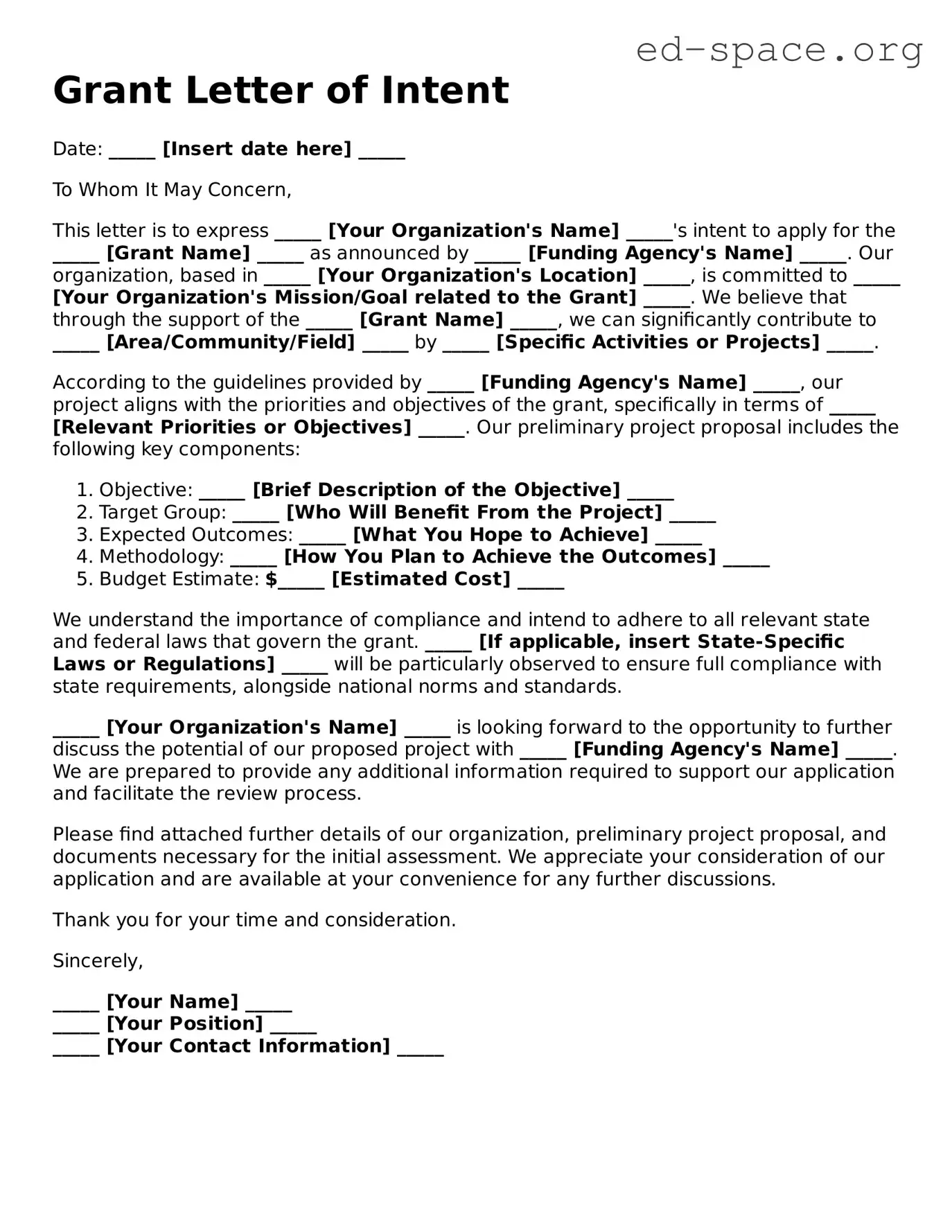Grant Letter of Intent
Date: _____ [Insert date here] _____
To Whom It May Concern,
This letter is to express _____ [Your Organization's Name] _____'s intent to apply for the _____ [Grant Name] _____ as announced by _____ [Funding Agency's Name] _____. Our organization, based in _____ [Your Organization's Location] _____, is committed to _____ [Your Organization's Mission/Goal related to the Grant] _____. We believe that through the support of the _____ [Grant Name] _____, we can significantly contribute to _____ [Area/Community/Field] _____ by _____ [Specific Activities or Projects] _____.
According to the guidelines provided by _____ [Funding Agency's Name] _____, our project aligns with the priorities and objectives of the grant, specifically in terms of _____ [Relevant Priorities or Objectives] _____. Our preliminary project proposal includes the following key components:
- Objective: _____ [Brief Description of the Objective] _____
- Target Group: _____ [Who Will Benefit From the Project] _____
- Expected Outcomes: _____ [What You Hope to Achieve] _____
- Methodology: _____ [How You Plan to Achieve the Outcomes] _____
- Budget Estimate: $_____ [Estimated Cost] _____
We understand the importance of compliance and intend to adhere to all relevant state and federal laws that govern the grant. _____ [If applicable, insert State-Specific Laws or Regulations] _____ will be particularly observed to ensure full compliance with state requirements, alongside national norms and standards.
_____ [Your Organization's Name] _____ is looking forward to the opportunity to further discuss the potential of our proposed project with _____ [Funding Agency's Name] _____. We are prepared to provide any additional information required to support our application and facilitate the review process.
Please find attached further details of our organization, preliminary project proposal, and documents necessary for the initial assessment. We appreciate your consideration of our application and are available at your convenience for any further discussions.
Thank you for your time and consideration.
Sincerely,
_____ [Your Name] _____
_____ [Your Position] _____
_____ [Your Contact Information] _____
